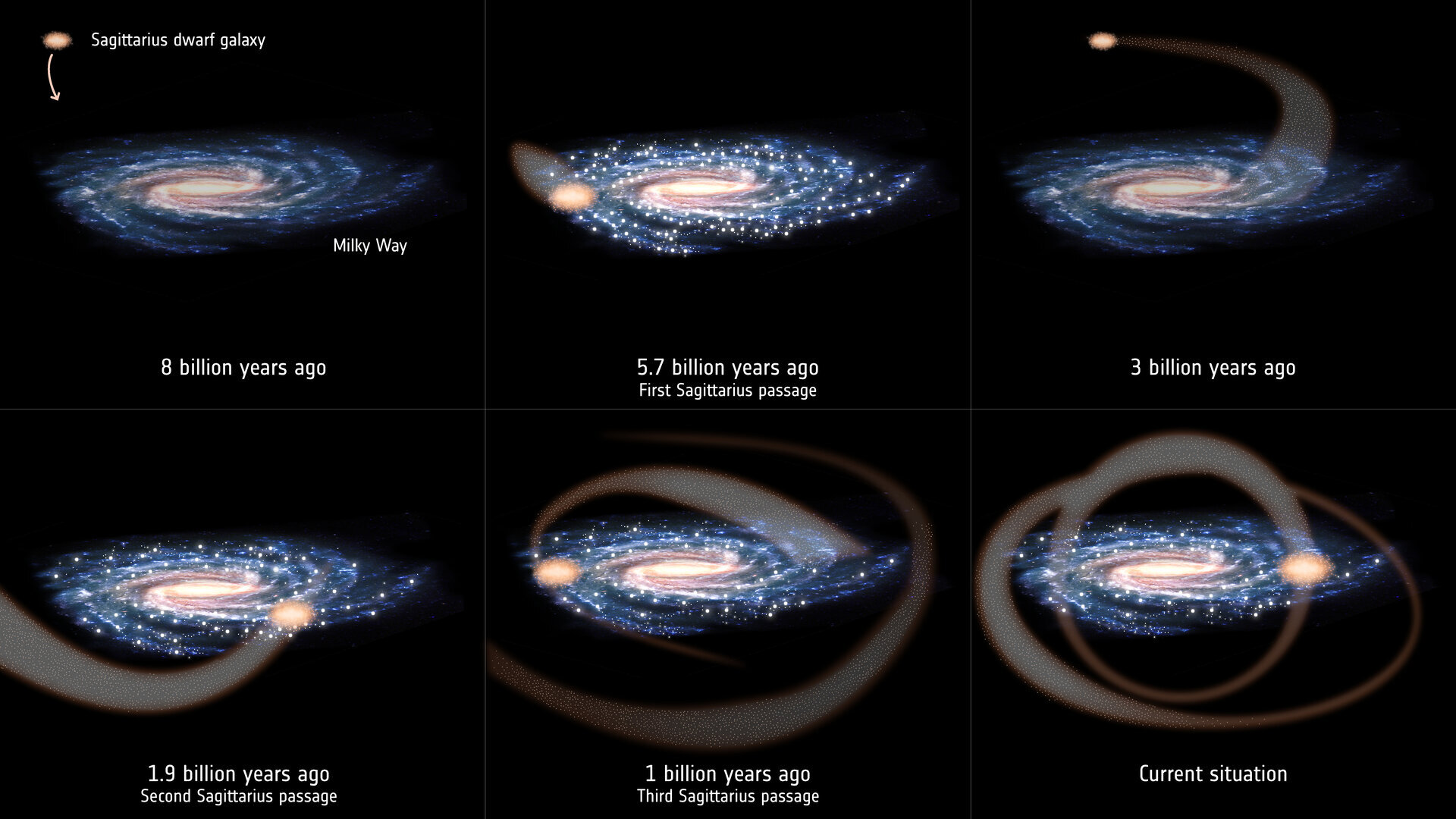Gravitational Force in the Universe
Subject: Science

Overview
Numerous celestial bodies, including planets, stars, comets, satellites, and meteors, are present throughout the entire universe, including the Milky Way. The gravitational force holds these heavenly bodies in place, with the Big Bang hypothesis being the most trustworthy. The force of attraction between these celestial bodies, known as the gravitational force, maintains their alignment and rotation in their orbits.
Look at the picture.
 Discuss the questions based on your day-to-day experience and observations, and then conclude.
Discuss the questions based on your day-to-day experience and observations, and then conclude.
- What kinds of celestial bodies are there in space?
- How are all of these celestial bodies locked into space?
- How did the cosmos, which contains so many heavenly bodies, come into being?
- Are there any celestial bodies that are not in motion?
The universe is the huge space that surrounds us. The planets, stars, comets, satellites, meteors, meteorites, asteroids, and other celestial bodies are among the numerous celestial bodies in the cosmos. A galaxy is made up of several stars. The Milky Way galaxy contains the Solar System.
The cosmos is a vast area. Even science has not been able to gather conclusive evidence regarding the universe's size, origin, and expansion. The universe is home to a few exceedingly massive celestial bodies. They also have a very large bulk. However, some heavenly bodies are also incredibly tiny and have less mass.
Some of them are solid, while others are in a gaseous condition. Stars, planets, satellites, infant planets, comets, meteors, meteorites, and other names have all been given to celestial bodies. The gravitational force of attraction holds every celestial body, including planets, satellites, and stars, in place. The universe is the term given to all of these heavenly bodies. Over the years, astronomers have put forth a variety of universe-origin theories. However, the Big Bang hypothesis is thought to be the most trustworthy of all of them. This hypothesis states that the universe's celestial bodies are all in motion. Significantly, Hubble has studied how these celestial bodies travel. Different theories concerning the future of the universe, including the open universe, closed universe, and flat universe, have been proposed due to the gravitational pull that occurs between these moving celestial bodies.
Importance of Gravitational Force in the Universe

- The sun, the earth, and the moon are shown in the picture. The earth revolves around the sun and the moon revolves around the earth. What is the reason for this?
- All these three celestial bodies have their gravity, but how is it possible for them to stay in their place?
- Why do planets and satellites not collide with each other while moving in their orbits?
Earth is a planet; it has mass. That's why it has gravity. The sun, earth, and moon have their gravity. As shown in the picture above, there is a mutual force of attraction between them in which the sun is attracting the earth towards its center and the earth is also attracting the sun towards its center. Similarly, the earth is attracting the moon towards its center and the moon is also attracting the earth towards its center. In this way, there is a mutual force of attraction among all celestial bodies in space. This force of attraction is called the gravitational force. Due to this gravitational force, the earth rotates on its axis as well as revolves in its orbit. The moon also revolves around the Earth. Similarly, every celestial body in the solar system revolves around the sun. Gravitational force is responsible for maintaining the alignment of the planets in their orbits and making them revolve around the sun.
Things to remember
- The planets, stars, comets, satellites, meteors, meteorites, asteroids, and other celestial bodies are among the numerous celestial bodies in the cosmos.
- There are a few really huge celestial bodies in the universe. They are also quite bulky. Still, some celestial bodies are small. They are also smaller in mass.
- The Milky Way galaxy contains the Solar System.
© 2021 Saralmind. All Rights Reserved.


 Login with google
Login with google